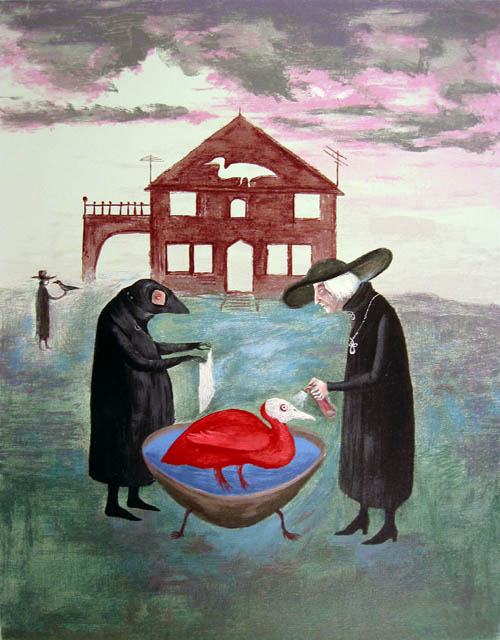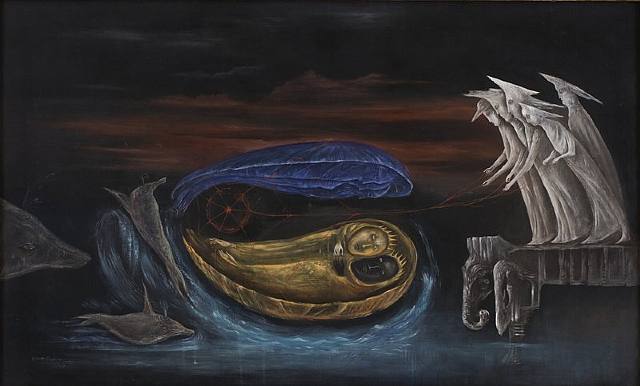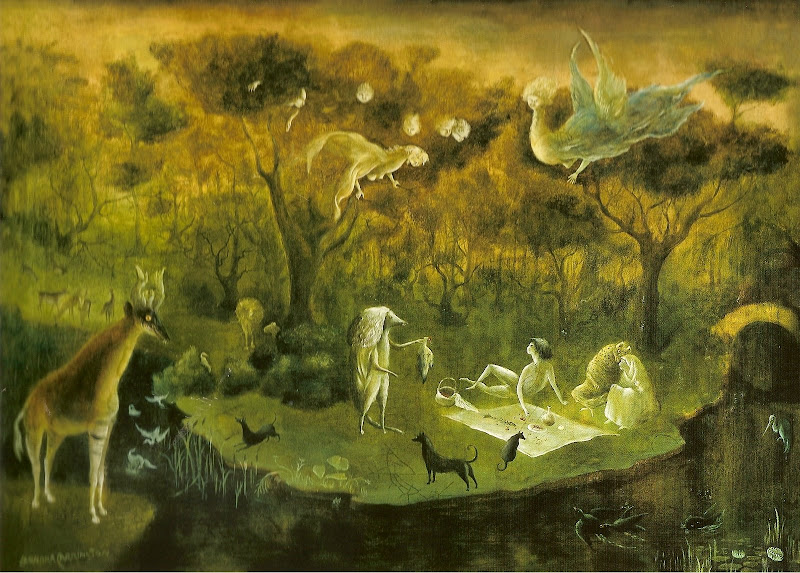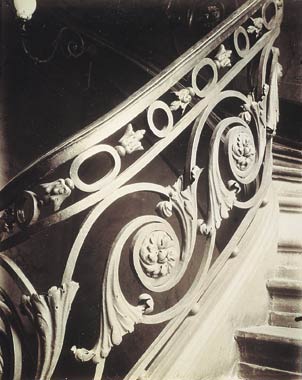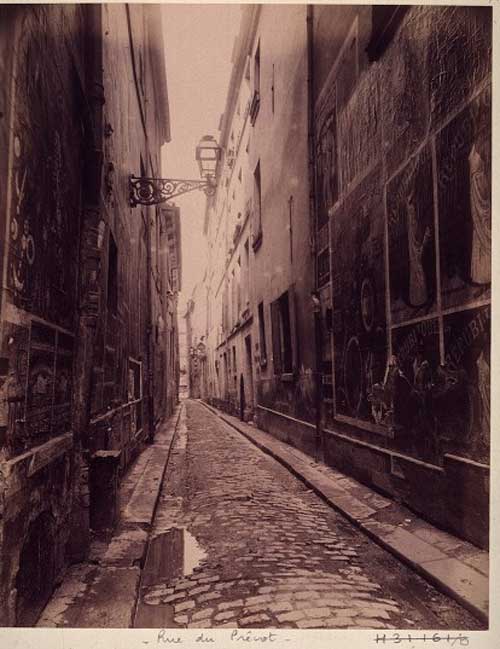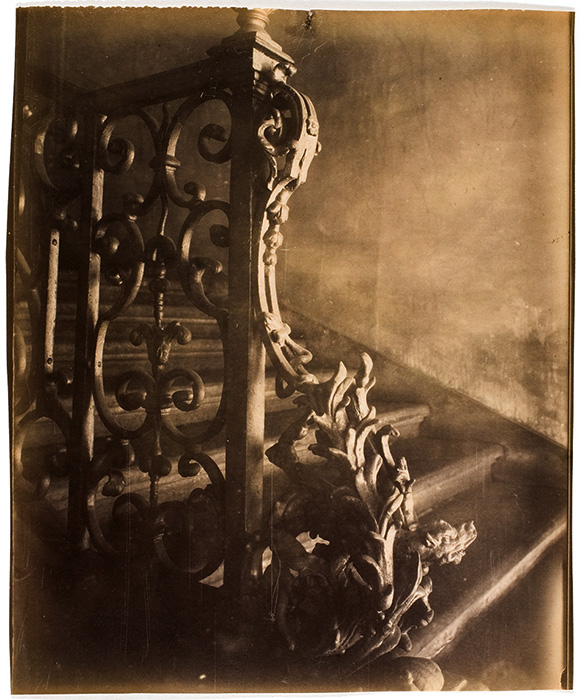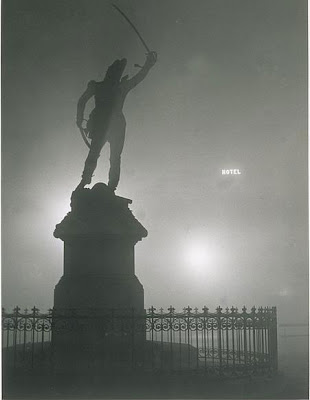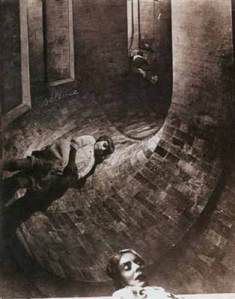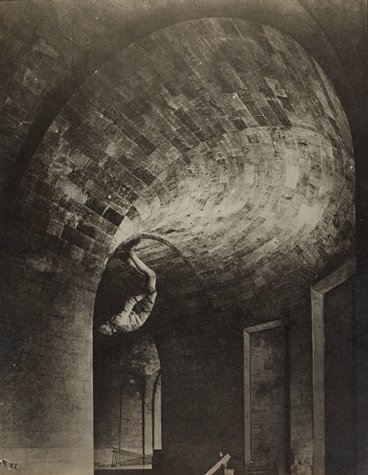André Breton , What is Surrealism? (Lecture in Brussels on 1/6/1934)
In this lecture, Breton explains the principles of Surrealism to a non specialist audience, and the history of the movement 15 years after its creation in 1919.
He distinguishes 2 eras:
1919-1924 (From the publication in 1919 of the first surrealist automatic writing experiment “Les champs magnétiques” to the publication of the First Surrealist Manifesto in 1924: a “purely intuitive epoch” characterised by “ the view that thought is supreme over matter”.
1924-ongoing: a “reasoning phase” characterised by the belief in “the necessity of crossing over the gap that separates absolute idealism from dialectical materialism” and “the supremacy of matter over mind”. This a phase of politicisation of the movement, triggered by the “outbreak of the Moroccan war” in 1924 and deepened by the rise of Fascism and the opposition with Stalinism during the 1930’s.
Oddly enough, it is this politically motivated desire to bridge the gap between dream and material reality that will take Surrealism away from its original experiments with automatism which, though fascinating in principle, tended to lead to repetitive results, and lead to the concepts of “the everyday marvellous” and “modern mythology” explored in Aragon’s “Paris Peasant”, Breton’s Nadja, the fascination with Atget’s photograhs, and the Surrealist unstaged photography tradition (Brassaï, Eli Lotar)
“a desire to deepen the foundations of the real, to bring about an even clearer and at the same time ever more passionate consciousness of the world perceived by the senses.”
“avoid considering a system of thought as a refuge, to pursue our investigations with eyes wide open to their outside consequences, and to assure ourselves that the results of these investigations would be capable of facing the breath of the street.”
“ to present interior reality and exterior reality as two elements in process of unification, or finally becoming one. This final unification is the supreme aim of surrealism”
Description of Surrealism as an “invisible ray”.
Aragon, Une Vague de rêves (1924):
“It should be understood that the real is a relation like any other; the essence of things is by no means linked to their reality, there are other relations besides reality, which the mind is capable of grasping and which also are primary, like chance, illusion, the fantastic, the dream. These various groups are united and brought into harmony in one single order, surreality… This surreality—a
relation in which all notions are merged together—is the common horizon of religions, magic, poetry, intoxications, and of all life that is lowly—that trembling honeysuckle you deem sufficient to populate the sky with for us.”
René Crével, L’Esprit contre la raison (1928) “Mind against Reason”
“ the drift of surrealism has always and chiefly been towards a general and emphatic crisis in consciousness”
Salvador Dali’s “Paranoïac-critical” method
La Femme Visible (1930):
“I believe the moment is at hand when, by a paranoiac and active advance of the mind, it will be possible (simultaneously with automatism and other passive states) to systematize confusion and thus to help to discredit completely the world of reality.
In order to cut short all possible misunderstandings, it should perhaps be said: “immediate” reality.”
Paranoia uses the external world in order to assert its dominating idea and has the disturbing characteristic of making others accept this idea’s reality. The reality of the external world is used for illustration and proof, and so comes to serve the reality of one’s mind. “
‘Surrealist Intervention’ number of Documents 34, Dali Essay ‘Philosophic Provocations’:
“Paranoia: Delirium of interpretation bearing a systematic structure.
Paranoiac-critical activity: Spontaneous method of “irrational knowledge” based on the critical and systematic objectification of delirious associations and interpretations.
Painting: Handmade colour “photography” of “concrete irrationality” and of the imaginative world in general.”
Breton comments:
“In order to form a concise idea of Dali’s undertaking, one must take into account the property of uninterrupted becoming of any object of paranoiac activity, in other words of the ultra-confusing activity rising out of the obsessing idea. This uninterrupted becoming allows the paranoiac who is the witness to consider the images of the external world unstable and transitory, or suspect; and what is so disturbing is that he is able to make other people believe in the reality of his impressions.”
Influence of Rimbaud
“The Manifesto of Surrealism has improved on the Rimbaud principle that the poet must turn seer. Man in general is going to be summoned to manifest through life those new sentiments which the gift of vision will so suddenly have placed within his reach.”
“Rimbaud’s sibylline pronouncement: “I say that one must be a seer, one must make oneself a seer”. As you know, this was Rimbaud’s only means of reaching the unknown.”
“Surrealism can flatter itself today that it has discovered and rendered practicable many other ways leading to the unknown.”
Breton list examples of methods used to reach the “unknown” within surrealist practice:
“The abandonment to verbal or graphic impulses”
“the resort to paranoiac-critical activity”
“simulation of mental diseases (acute mania, general paralysis, dementia praecox), which Paul Eluard and I practised in The Immaculate Conception (1930), undertaking to prove that the normal man can have access to the provisorily condemned places of the human mind”
“the manufacture of objects functioning symbolically”
“the analysis of the interpenetration of the states of sleep and waking, tending to make them depend entirely on one another and even condition one another in certain affective states, which I undertook in The Communicating Vessels”
“the automatism from which we started and to which we have unfailingly returned does in fact constitute the crossroads where these various paths meet.”
“bring about the state where the distinction between the subjective and the objective loses its necessity and its value”
“Surrealism, starting fifteen years ago with a discovery that seemed only to involve poetic language, has spread like wildfire, on pursuing its course, not only in art but in life. It has provoked new states of consciousness and overthrown the walls beyond which it was immemorially supposed to be impossible to see; it has—as is being more and more generally recognized—modified the sensibility, and taken a decisive step towards the unification of the personality, which it found threatened by an ever more profound dissociation.”
I think this last sentence is a reference to the Marxist concept of alienation (inspired by Hegel’s concept of work as expression human creativity). Alienation is the idea than human beings are estranged from their true selves because Capitalism expropriates the fruit of their labor which, under Hegel’s concept, is the expression of man’s unique ability to create from scratch (as opposed to animals). Human beings are estranged from themselves because the act of working ceases to be a mean to express one’s inner self within the material world.
André Breton, Manifeste du Surréalisme (1924)
« Je crois à la résolution future de ces deux états, en apparence si contradictoires, que sont le rêve et la réalité, en une sorte de réalité absolue, de surréalité, si l’on peut ainsi dire. » p24
“I believe in the future transmutation of those two seemingly contradictory states, dream and reality, into a sort of absolute reality, of surreality, so to speak.”
« Ce qu’il y a d’admirable dans le fantastique, c’est qu’il n’y a plus de fantastique: il n’y a plus que le réel. » p25
“What is admirable about the fantastic is that there is no longer a fantastic; there is only the real.”
« Le merveilleux n’est pas le même à toutes les époques; il participe obscurément d’une sorte de révélation générale dont le détail seul nous parvient: ce sont les ruines romantiques, le mannequin moderne ou tout autre symbole propre à remuer la sensibilité humaine durant un temps. Dans ces cadres qui nous font sourire, pourtant se peint toujours l’irrémédiable inquiétude humaine. » p26
Pierre Reverdy p31:
« L’image est une création pure de l’esprit. Elle ne peut naître d’une comparaison mais du rapprochement de deux réalités plus ou moins éloignées. Plus les rapports des deux réalités rapprochées seront lointains et justes, plus l’image sera forte – plus elle aura de puissance émotive et de réalité poétique… » p31
« La valeur de l’image depend de la beauté de l’étincelle obtenue; elle est, par conséquent, fonction de la différence de potentiel entre les deux conducteurs. » p49
« SURREALISME, n.m. Automatisme psychique pur, par lequel on se propose d’exprimer, soit verbalement, soit par écrit, soit de toute autre manière, le fonctionnement réel de la pensée. Dictée de la pensée, en l’absence de tout contrôle exercé par la raison, en dehors de toute préoccupation esthétique ou morale.”
“ Le surréalisme repose sur la croyance à la réalité supérieure de certaines formes d’associations négligées jusqu’à lui, à la toute-puissance du rêve, au jeu désintéressé de la pensée. Il tend à ruiner définitivement tous les autres mécanismes psychiques et à se substituer à eux dans la résolution des principaux problèmes de la vie.” p37
Description of the surrealist artist as a psychic or a radio receptor p39:
“nous qui ne nous sommes livrés à aucun travail de filtration, qui nous sommes faits dans nos oeuvres les sourds réceptacles de tant d’échos, les modestes appareils enregistreurs qui ne s’hypnotisent pas sur le dessin qu’ils tracent, nous servons peut être encore une plus noble cause. Ainsi rendons-nous avec probité le « talent » qu’on nous prête. […] Nous n’avons pas de talent. »
« We, on the contrary, who have not given ourselves to processes of filtering, who through the medium of our work have been content to be the silent receptacles of so many echoes, modest registering machines that are not hypnotized by the pattern that they trace, we are perhaps serving a yet much nobler cause. So we honestly give back the talent lent to us. […] We have no talent…”
Breton, Surrealism and Painting – Le Surréalisme et la Peinture (1928)
“L’oeil existe à l’état sauvage” p11
“The eye exists in a savage state.”
By this, Breton means that sight is the one sense that perceives signals in the most intuitive way, without the need to be “trained” whether by education, taste etc… Therefore the Surrealists will favour visual arts, contrary to the Symbolists who considered that every artwork should aim to become music.
“L’oeuvre plastique, pour répondre à la nécessité de révision absolue des valeurs réelles sur laquelle aujourd’hui tous les esprits s’accordent, se référera donc à un modèle purement intérieur.” p15
“douer l’esprit humain de ce qui lui faisait tellement défaut: je veux dire d’un véritable isolant grâce auquel cet esprit, se trouvant idéalement abstrait de tout,commence à s’éprendre de sa vie propre où l’atteint et le désirable ne s’excluent plus et prétend dès lors soumettre à une censure permanente, de l’espèce la plus rigoureuse, ce qui jusque-là le contraignait; si, depuis eux, la notion du permis et du défendu a pris cette consistance élastique que nous lui connaissons.” p15
“Il faut avoir pris conscience à un si haut degré de trahison des choses sensibles pour oser rompre en visière avec elles, à plus forte raison avec ce que leur aspect coutumier nous propose de facile” p16
“Tout ce que j’aime, tout ce que je pense et ressens, m’incline à une philosophie particulière de l’immanence d’après laquelle la surréalité serait contenue dans la réalité même, et ne lui serait ni supérieure, ni extérieure. Et réciproquement, car le contenant serait aussi le contenu. Il s’agirait presque d’un vase communicant entre le contenant et le contenu. C’est dire si je repousse de toutes mes forces les tentatives qui, dans l’ordre de la peinture comme l’écriture, pourraient avoir étroitement pour conséquence de soustraire la pensée de la vie, aussi bien que de placer la vie sous l’égide de la pensée.” p69
“All that I love, all that I think and feel inclines me towards a particular philosophy of immanence according to which surreality will reside in reality itself and will be neither superior nor exterior to it. And conversely, because the container shall be also the contained. One might almost say that it will be a communicating vessel placed between the container and the contained. That is to say, I resist with all my strength temptations which, in painting and literature, might have the immediate tendency to withdraw thought from life as well as place life under the aegis of thought.”
This metaphor of the container and the contained will be developed in 1932 in “Communicating Vessels” (“Les vases communicants”)
André Breton, Second Manifeste du Surréalisme (1930)
« Tout porte à croire qu’il existe un certain point de l’esprit d’où la vie et la mort, le réel et l’imaginaire, le passé et le futur, le communicable et l’incommunicable, le haut et la bas cessent d’être perçus contradictoirement. Or c’est en vain qu’on chercherait à l’activité surréaliste un autre mobile que l’espoir de détermination de ce point. […] En ce lieu mental d’où l’on ne peut plus entreprendre que pour soi même une périlleuse mais, pensons-nous, une suprême reconnaissance. » p73
« Everything leads to the belief that there exists a certain point of the mind at which life and death, the real and the imaginary, the past and the future, the communicable and the incommunicable, the high and the low, are not perceived as contradictions. It would be vain to attribute to surrealism any other motive than the hope of determining this point. It is clear, moreover, that it would be absurd to ascribe to surrealism either a purely destructive or a purely constructive character—the point at issue being precisely this: that construction and destruction can no longer be brandished against each other. […] On this mental plane from which one may for oneself alone embark on the perilous, but, we think, supreme reconnaissance»
« arracher la pensée à un sevrage toujours plus dur, la remettre sur la voie de la compréhension totale, la rendre à sa pureté originelle. » p73
« uprooting thought from an increasingly cruel serfdom, of bringing it back to the path of total comprehension, of restoring to its original purity »
« L’idée de surréalisme tend simplement à la récupération totale de notre force psychique par un moyen qui n’est autre que la descente vertigineuse en nous, l’illumination systématique des lieux cachés et l’obscurcissement progressif des autres lieux, la promenade perpétuelle en pleine zone interdite. » p86
« la pénétrabilité de la vie subjective par la vie « substantielle » » p88
« Intellectuellement la vraie beauté se distingue mal, a priori, de la beauté du diable. » p95
André Breton, Les Vases Communicants (1932)
« Le monde du rêve et le monde réel ne font qu’un, autrement dit que le second ne fait, pour se constituer, que puiser dans le « torrent du donné » – qu’à tenter de faire apercevoir sur quelles différences de relief et d’intensité repose la distinction qui peut être faite entre les opérations véritables et les opérations illusoires qui s’inscrivent respectivement dans l’un et dans l’autre, de cette distinction très précise dépendant, de toute évidence, l’équilibre mental. » p68
« La vie humaine, conçue hors de ses limites strictes que sont la naissance et la mort, n’est à la vie réelle que ce que le rêve d’une nuit est au jour qui vient d’être vécu. » p136
André Breton, Genèse et perspective artistiques du surréalisme (1941)
Quoting Balzac « Chef d’œuvre inconnu »
« La mission de l’art n’est pas de copier la nature, mais de l’exprimer. » p75
« Au bout de ce chemin semé d’embuches réelles ou non il y a la traversée du miroir par Alice » p76
Alice through the looking glass is used as a metaphor for Art that ceases to copy reality, and rather chooses to express it.
« L’automatisme, hérité des médiums » p94
« Une œuvre ne peut être tenue pour surréaliste qu’autant que l’artiste s’est efforcé d’atteindre le champ psychophysique total (dont le champ de conscience n’est qu’une faible partie). Freud a montré qu’à cette profondeur « abyssale » règnent l’absence de contradiction, la mobilité des investissements émotifs dus au refoulement, l’intemporalité et le remplacement de la réalité extérieure par la réalité psychique, soumise au seul principe du plaisir. L’automatisme conduit à cette région en ligne droite. » p97
André Breton, Du Surréalisme en ses œuvres vives (1953)
« la Gnose, en tant que connaissance de la Réalité suprasensible, « invisiblement visible dans un éternel mystère » p173



